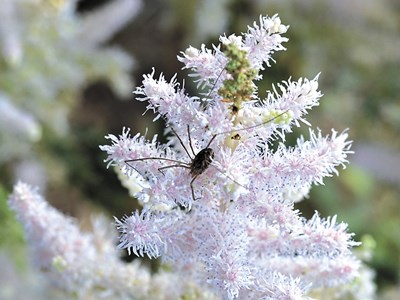In my last column, I wrote about ridding your yard of earwigs, and as a last straw, I mentioned using DE and Boric Acid. I feel that these two items deserve more than a mention.
DE, as it is colloquially known, is called diatomaceous earth. It is all natural and made up of tiny fossilized water plants. You can buy it in powder form or liquid. As a powder, it can be applied wherever there are undesirable insects around the property.
To them, the powder is razor sharp and essentially scratches them up. Even more horrifying, if they ingest the powder or liquid, their insides will be shredded. Fine. Okay. I wouldn’t want to be breathing this stuff. At all.
Boric Acid. Now there’s a poison. This stuff, while it will finish up the last of those bugs, could also harm desirable insects, animals, and even humans.
At one time in Canada, Borax was used as a food ingredient to tenderize meat. The Canada Food and Inspection Agency has since made it a violation to use this ingredient in any food items. But we can still sprinkle it around the house? No thanks.
My philosophy is this: if I’m going to great lengths to create a peaceful, harmonious garden environment, I will try to encourage a healthy environment by attracting desirable insects and wildlife and avoiding placing plants where they become targets.
While this is a lifelong goal and seems sometimes an impossible task, it’s one I take seriously. But I make simple changes. Like, I have bird baths in the garden and scalloped leaf plants that hold water to provide a source of hydration for all. And I change those baths frequently to avoid mosquitoes.
According to Linda Hugli, a resident master gardener, gardeners should take a “proactive approach, rather than a reactive one.” For example, in her garden, to avoid slug damage on her hostas, she plants them in light to dappled shade, and avoids purchasing hostas whose leaves are on the papery side.
The waxier leaf variety provides its own barrier to slug devastation. But if a leaf gets chewed, she removes it quickly, which promotes new healthy growth.
When aphids attack my petunias, I pinch off the whole section and toss the lot out. I do it every day. Doing this helped me avoid a full-scale devastation of the plant.
Insects sure love the young tender growth, so vigilance in the early months of summer and spring is important. If your perennials are under attack, once they become established, they can better fend for themselves. If not, a sharp spray with the hose can do wonders.
And dealing with those types of insects that never seem to retreat? You will likely never get rid of them all, but instead should learn to adjust your expectations. It’s the only way to find peace in the garden.
Anne Boulton is an avid gardener who lives in Sudbury. Visit her blog at greenboots.ca or contact her at [email protected].
Posted by Vivian Scinto
Join Sudbury.com+
- Messages
- Post a Listing
- Your Listings
- Your Profile
- Your Subscriptions
- Your Likes
- Your Business
- Support Local News
- Payment History
Sudbury.com+ members
Already a +member?
Not a +member?
Sign up for a Sudbury.com+ account for instant access to upcoming contests, local offers, auctions and so much more.
